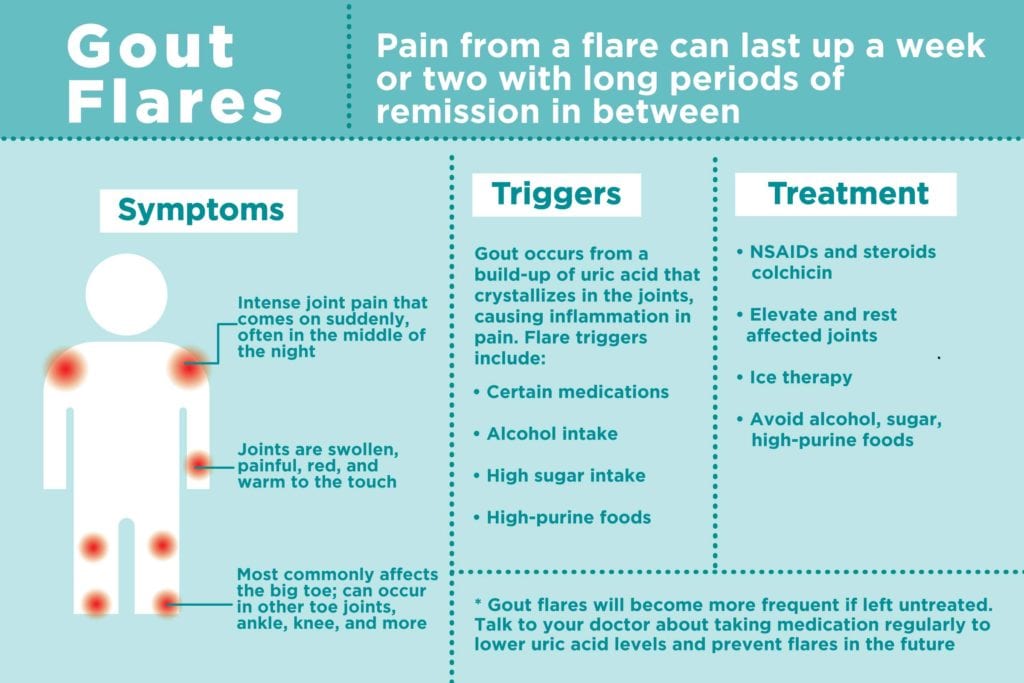
There are several treatments for gout, including NSAIDs, nonsteroidal anti-inflammatory drugs, and urate crystal injections. These medications are effective for the short-term treatment of gout. However, there are side effects, including high blood pressure, an upset stomach, and an ulcer. They should only be used in the absence of other underlying health problems. Generally, they should not be taken for more than six months.
NSAIDs – nonsteroidal anti-inflammatory drugs – are the first treatment for gout. These drugs decrease pain and inflammation in joints. Short-acting NSAIDs are the most common treatment for acute gout. They are effective and well tolerated, though they may cause stomach upset and should only be used for a short period of time. Some people cannot take NSAIDs due to other health conditions.
NSAIDs – These are often prescribed to reduce pain and inflammation in gout. However, they can be harmful to people with kidney or liver problems. NSAIDs are also not an ideal treatment for gout. Patients must be careful not to take them more than prescribed, since they can interact with other medications and affect their kidneys. In addition, NSAIDs have a high risk of causing other complications, and they should only be used under the guidance of a doctor.
XOIs – These medications improve the removal of uric acid from the body. These medicines have a number of side effects, including rashes, stomach pain, and kidney stones. In addition to avoiding alcoholic beverages, gout sufferers should also limit their intake of alcohol and drinks with fruit sugar. Instead, they should drink plenty of water. They should also avoid high purine foods such as anchovies, scallops, trout and tuna. Low-fat dairy products may be helpful for people with gout.
Before you start taking a new medicine, make sure you know your medical history. Site Handaldok Kesehatan recommends medications to lower blood uric acid levels after a single flare-up. In addition, uric acid-lowering agents, such as xanthine oxidase inhibitors, help the kidneys filter uric acid from the blood. For severe gout, intravenous enzyme-based uric acid-lowering drugs may be prescribed.

X-rays and MRIs are common imaging tests that take pictures of affected joints. X-rays, ultrasounds, and MRIs are some of the most common tests done on patients with gout. Aspiration can remove fluid from the affected joint, which a doctor can examine for uric acid crystals. A uric acid lowering drug is also used to reduce the pain caused by gout.
The most common treatments for gout are NSAIDs, which can help control the pain caused by gout attacks. NSAIDs can reduce gout pain and may be recommended for people who cannot tolerate pain medication. If gout symptoms recur, your doctor may prescribe an antibiotic. Some NSAIDs can cause serious side effects, including diarrhea and kidney damage.
NSAIDs are often used to relieve the pain of a gout attack. NSAIDs are commonly used to treat gout. Some NSAIDs are injected into the affected joint to reduce swelling and inflammation. Other non-steroidal anti-inflammatory drugs are given as tablets or injections to relieve pain. The main goal of NSAIDs is to reduce gout symptoms and prevent future attacks.
Corticosteroids are also widely used for gout. These drugs reduce inflammation and pain. They can be taken orally or intravenously, depending on the severity of the disease. Both types of medications are associated with side effects, including an increased risk of infections and increased blood pressure. For those who cannot tolerate NSAIDs, corticosteroids are given for the short-term treatment of gout. However, they are not suitable for everyone.
NSAIDs are powerful medications that reduce swelling and pain. NSAIDs are most effective when taken within the first 24 hours after a gout attack. Some NSAIDs can be purchased without a prescription, while others must be prescribed by a doctor. The most common side effects of NSAIDs include heartburn and stomach pain. In addition, NSAIDs may increase the risk of high blood pressure and dizziness.
